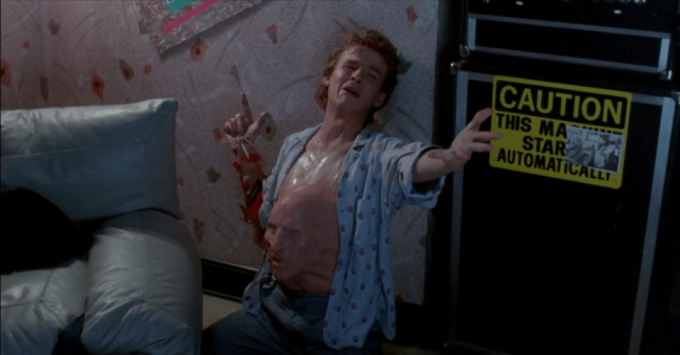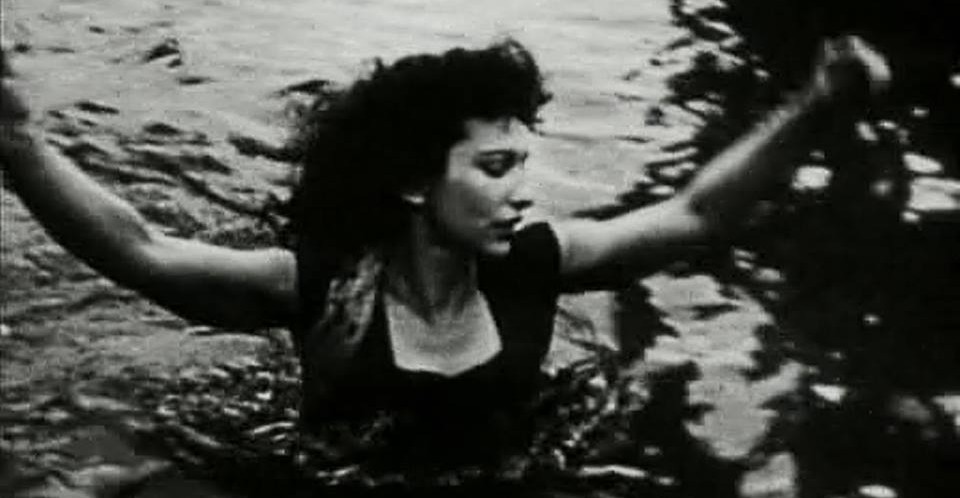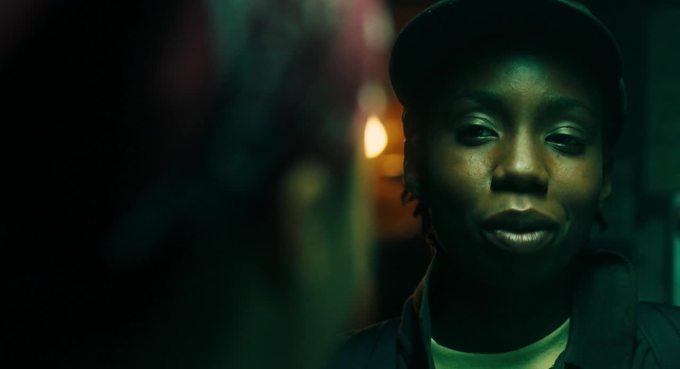
A Nightmare On Elm Street Part 2: Freddy’s Revenge may not have much going for it at all, other than being perhaps the only ostensibly straight horror film gayer than The Lost Boys, but at least it has that, I suppose.
Indeed, sexuality is at the core of most responses to ANOES2. Long before the frankly annoying, bordering on genuinely offensive jokes about the Babadook and the new Pennywise being gay icons, people were already speculating on the perceived “fruitiness” of Freddy, particularly in relation to Jesse, the protagonist of ANOES2, sleepwalking away from his haplessly unfulfilled beard of a girlfriend to the bedroom of his boisterous classmate, and an encounter with his sadistic gym teacher in a leather bar. His gym teacher’s death includes being bound in a standing position and being nakedly towel-whipped, by the way.
However, any critical interpretation of
ANOES2 that reads Freddy as a homophobic portrayal of queer monstrosity (not that cinematic representations of queer monstrosity has ever been anything to which I’ve been remotely consistently opposed) is an oversimplification to the point of gross misrepresentation. The first ANOES reflected on traumatic neuroses of adolescence above all in relation to the sins-of-the-father (and, indeed, mother), commenting astutely to a level really only bested by IT on the parental negligence, if not total absence in one sense or another, integral to virtually every teen slasher ever made. ANOES2, by contrast, reflects the brutality of the closet for queer teens, trying to make it through high school.
In contrast to a great many horrors, in which the domesticated animals that suffer the most are typically pet cats, in this film we see the deaths – in fact, explosions, of birds and, later, fish. Animals that are caged, confined, one might suggest closeted. The death of Coach Schneider makes significant reference to BDSM at a time when it was almost exclusively associated with gay subculture, but decides to leave the gay bar, in favour of a high school changing room. By electing as a torture implement a wet towel over an actual whip, Freddy draws attention to the significant undertones of queer sexual frustration within so many horseplay and hazing rituals within male bonding contexts that always hole a volatile, violent potential. In such a way, a character who could have become a great confidante for the hero is instead the non-supernatural antagonist, until his death.
One of the most striking images from the original film was the phone receiver growing a tongue and freaking out not only the hero, Nancy, but everyone else in the audience. Similarly in ANOES2 Freddy’s tongue makes another appearance, flopping out of Jesse’s mouth as he makes out with Lisa. An exaggerated size, but also blue and flaccid, the tongue is no longer a simple phallic signifier of prurience, but of overcompensation. Freddy is absolutely throughout the film the manifestation of a deformed masculinity which, in the name of self-denial of genuine desires, acts out both destructively and self-destructively.
So, why am I only giving ANOES2 two and a half stars? Put most simply, it’s just not scary enough. Freddy’s apparent need for Jesse to kill for him in this film makes the entire process rather more mundane, and thus it doesn’t engage with nearly enough surrealism in the dream sequences, or blur the line between dream and reality to the same seamless extent as the first. If my interpretation of ANOES2 is correct, that Freddy’s power in this film stems first and foremost from the violent anguish of the closet, it stands to reason that his defeat should have been connected to a coming-out of one sort or another. Instead, Lisa kissing Freddy to turn him back into Jesse, freeing him from the clutches of evil via the assurance of heterosexual romance, is a significant let-down. Of course, the fact that he is revealed in the final sequence not to be defeated, after all, could imply a hammering-home of my interpretation but, considering ANOES‘ ending being stuck on at the last minute, contrary to Wes Craven’s wishes, to imply later sequels, it’s hard not to perceive ANOES2‘s in exactly the same way, rendering it largely worthless in terms of analysis.
ANOES2 is, ultimately, a less than successful horror in every aspect apart from its novel approach to representation of queer anxiety. This is, however, more than enough reason to watch it.
⭐⭐1/2


